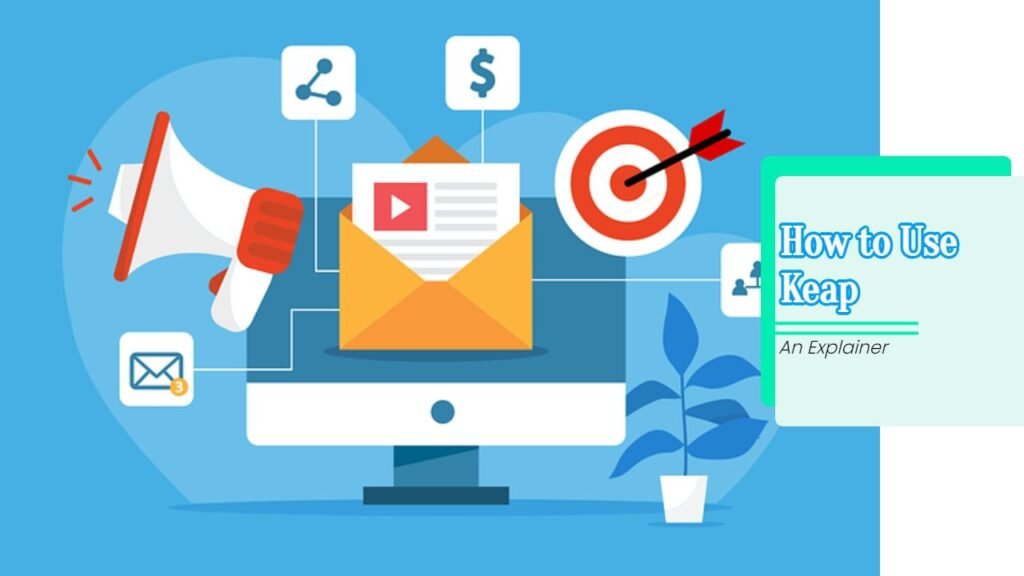User-Generated Content (UGC) is one of the most potent forms of digital currency in the modern age. Not only does it lend authenticity to your brand, but it also engages your audience in an interactive dialogue, thereby creating a robust ecosystem for lead generation. Let’s start by understanding what UGC is and why it matters.
What is User-Generated Content (UGC)?
User-Generated Content encompasses any form of content, be it reviews, testimonials, photos, videos, or even tweets, that is created by individuals rather than the brand itself. UGC isn’t a new concept, but with the advent of social media, its potential for impact has skyrocketed.
The Psychology Behind UGC
Understanding the psychological triggers that make UGC so compelling can offer insights into its efficacy for lead generation.
- Social Proof: Humans tend to follow the herd. When we see real people advocating for a product, it assuages our fears and validates our choices.
- Authenticity: In a digital landscape crowded with curated brand messages, the genuine nature of UGC stands out.
- Community Building: UGC fosters a sense of community among users, thereby enhancing brand loyalty.
- Interactive: The very essence of UGC is interactive. When people contribute content, they are more likely to engage with the brand and become invested in its success.
Why UGC Matters for Lead Generation
- Content Diversity: UGC adds variety to your content mix, which can help maintain ongoing engagement with your audience.
- Cost-Effectiveness: It’s generally less expensive to repurpose user-generated content than to constantly create new content from scratch.
- SEO Benefits: UGC like reviews and blog comments can be an SEO goldmine, offering organic keywords and backlinks that can improve your site’s search ranking.
- Personalization: UGC allows for personalized marketing strategies. For example, showcasing user-generated content from a specific demographic can make your outreach more targeted.
Types of User-Generated Content for Lead Generation
Understanding the different types of UGC available can help you strategize more effectively. Each has its own set of advantages, challenges, and use-cases.
Customer Reviews and Testimonials
Arguably the most straightforward form of UGC, reviews and testimonials are powerful tools for building credibility. Here’s how they can be particularly useful:
- Trust Factor: Reading a positive review from an actual user can significantly influence potential leads.
- SEO Boost: Reviews often include organic keywords and provide fresh content, which search engines love.
- Long-term Benefits: Once a positive review is out there, it keeps working for you, again and again, attracting more leads over time.
Social Media Mentions and Hashtags
In this social media age, a tweet or an Instagram post mentioning your brand can go a long way. The benefits include:
- Instant Visibility: A well-timed tweet can quickly become viral, reaching thousands of potential leads in a short time.
- Engagement: Leveraging social mentions allows you to engage directly with the user, leading to increased brand loyalty and potential conversion.
- Custom Campaigns: Encouraging users to use a specific hashtag can lead to a treasure trove of UGC that can be showcased on your own platforms.
User-Submitted Videos
With the rise of platforms like TikTok and Instagram Reels, user-submitted videos have gained immense popularity. They can be particularly effective for:
- Demonstrating Products: A real user demonstrating how they use your product can be much more impactful than a brand-created tutorial.
- Storytelling: Videos allow for richer storytelling, which can be emotionally compelling and engaging for potential leads.
- Multi-Platform Use: Once you have user-submitted videos, you can repurpose them across various marketing channels, multiplying their impact.
User-Generated Blog Posts
While less common, guest blog posts from users can offer a unique perspective and provide valuable insights into how your product or service is used in real-world scenarios.
- Expertise: A well-crafted blog post can establish your brand as an authority in your industry, attracting more qualified leads.
- Collaborative Promotion: When a user contributes a blog post, they are likely to share it within their own networks, resulting in a broader reach.
Interactive UGC like Polls and Contests
These formats are more interactive and require a higher level of engagement from the user, making them highly effective for lead generation.
- Instant Feedback: Polls can provide immediate insights into consumer preferences.
- Community Building: Contests encourage users to contribute and share content, creating a sense of community.

Related: Check out our free SEO suite

Strategies for Leveraging UGC for Lead Generation
Effective use of UGC for lead generation is not a one-size-fits-all affair. It requires planning, innovation, and constant optimization. Below are some tried-and-tested strategies to make the most of this invaluable resource.
Encourage Reviews with Incentives
Customer reviews can offer a host of benefits, but how do you encourage more people to leave reviews? Incentives can be an effective strategy.
- Discount Codes: Offer a small discount on the next purchase in exchange for a review.
- Loyalty Points: Integrate reviews into a broader loyalty program where users earn points for various forms of engagement.
- Feature Reviews: Showcase the best reviews on your website or social media, encouraging more users to write their own for a chance to be featured.
Leverage Social Media Campaigns
Social media platforms are ripe for harvesting UGC. Designing targeted campaigns can significantly boost engagement and lead generation.
- UGC Hashtag Campaign: Create a unique hashtag and encourage users to post content using the hashtag. Offer prizes for the best submissions.
- User Spotlights: Regularly feature user-generated content on your own social media platforms, creating a sense of community and encouraging more UGC.
- Crowdsourced Ideas: Use your social media to ask for suggestions or ideas for new features or products, making your audience feel part of the product development process.
User-Submitted Video Contests
Harness the power of video by organizing contests where users can submit their own video content.
- Themes: Create themes for the video content to make the contest more interesting and to align it with specific products or seasons.
- Judging Criteria: Make the judging criteria clear from the start, whether it’s the number of likes, the creativity of the content, or the quality of the demonstration.
- Cross-Promotion: Use the contest as an opportunity to cross-promote other products or services.
Optimize User-Generated Blog Posts
While this is a less common form of UGC, the value it can bring in terms of SEO and expertise is enormous.
- Guest Blogging Guidelines: Make it easier for users to contribute by offering clear guidelines and templates.
- SEO Best Practices: Offer some basic SEO tips to contributors, ensuring the final content helps improve your search rankings.
- Promotion: Once the post is live, promote it across all channels and encourage the guest blogger to do the same.
Data Analytics for Continuous Improvement
The work doesn’t end once the UGC is published; it’s essential to measure its effectiveness regularly.
- Track Engagement: Use analytics tools to measure the level of engagement each piece of UGC receives.
- Customer Journey: Map out how UGC affects the customer journey and adapt your strategies accordingly.
- ROI Measurement: Calculate the ROI of your UGC campaigns to understand their effectiveness in lead generation.
Legal Considerations and Best Practices
You can’t just use any UGC you come across. You must adhere to laws and regulations around copyright, consent, and data protection to name a few.
Copyright Laws
User-Generated Content is protected by copyright laws, which means that you need explicit permission from the creator to use it.
- Request Permission: Always ask for permission before using someone’s content. This can often be as simple as sending a direct message on the platform where the content was posted.
- Documentation: Keep a record of any permissions you obtain. Whether it’s a screenshot of a message where the user grants you permission or an email, documentation is crucial in case of disputes.
- Attribution: Always credit the creator when using their content. It’s not just good manners; it’s often legally required.
Consent and Disclosure
Using someone’s image or personal information could also necessitate specific consent, especially under regulations like the GDPR in Europe.
- Explicit Consent: Always get explicit consent when personal information is involved. This often means more than just a casual yes and might require a formal agreement.
- Ongoing Relationship: Consent isn’t a one-time affair. Keep the lines of communication open to ensure that the user is comfortable with how their content is being used over time.
- Transparency: Always disclose how the UGC will be used. Will it appear in a Facebook ad? A blog post? A banner in Times Square? Make sure the user knows and agrees.
Data Protection and Privacy
Data protection laws like GDPR or CCPA in California have specific requirements when it comes to handling personal data, which can often appear in UGC.
- Data Handling: Make sure you’re following all data protection laws applicable to your audience when storing and using UGC.
- Anonymization: If you’re using UGC for analytics, anonymize the data to protect users’ privacy.
- Data Rights: Understand and respect the data rights of the user. This includes the right to have their data (and UGC) deleted upon request.
General Best Practices
- Transparency: Always be clear about how and where the content will be used.
- Community Guidelines: Establish clear community guidelines that set the tone for the kind of UGC you encourage.
- Quality Over Quantity: It might be tempting to use every piece of UGC you come across, but focusing on quality contributions will yield better results in the long run.
- Moderation: Actively moderate UGC to ensure that it aligns with your brand values and community guidelines.
Your UGC Roadmap for Lead Generation
Knowing is half the battle; now let’s talk about doing. Here is a concise, actionable plan to get you started.
Phase 1: Planning
- Objective Setting: Clearly define what you want to achieve with your UGC campaign. Is it increased website traffic, higher conversion rates, or perhaps greater brand awareness?
- Target Audience: Identify your ideal customers and tailor your UGC campaign to appeal to them.
- Legal Framework: Set up the legal guidelines to ensure all user content you collect and use complies with regulations.
Phase 2: Implementation
- Choose UGC Type: Decide on the kind of UGC that will best serve your objectives. This could be reviews, testimonials, or user-submitted videos.
- Promotion: Use your existing channels to promote your UGC campaign. Make sure to explain clearly how users can participate.
- Incentivize: Offer incentives like discounts or freebies to encourage more user participation.
Phase 3: Management and Monitoring
- Community Management: Actively engage with the users who are contributing content. Ask for permissions and thank them for their contributions.
- Quality Control: Regularly monitor the incoming UGC to ensure it aligns with your brand guidelines and objectives.
- KPI Tracking: Keep an eye on metrics like engagement rate, conversion rate, and ROI to measure the effectiveness of your UGC campaign.
Phase 4: Optimization and Scaling
- Data Analysis: Collect and analyze data to see what’s working and what’s not.
- Iteration: Use the insights gained to optimize the current campaign or to plan future ones.
- Scaling: Once you have a working model, consider scaling it to other products, services, or markets.
Key Takeaways
Before diving into action, it’s crucial to internalize the key lessons we’ve discussed:
- UGC is More Than Just Content: It’s about community building, brand trust, and interactive engagement, all of which contribute to lead generation.
- Quality Over Quantity: Choose UGC that aligns with your brand’s vision, voice, and customer persona.
- Legal Is Essential: Make sure to follow the guidelines around copyright, data protection, and consent.
- Diverse Strategies, Diverse Results: UGC can be applied in myriad ways, from simple strategies like customer reviews to complex ones like content co-creation.
- Measure to Manage: Always monitor KPIs to understand what’s working and what needs adjustment.
Read Next:
- How to Use Google Trends for Keyword Research
- How to Use Quizzes and Surveys for Lead Generation
- Role of Technical SEO in Google Search Rankings
- How to Create a Digital Marketing Plan: The Complete Guide
- How to use Eloqua: An Explainer
- Recent Trends in Mergers and Acquisitions in the US (2023)






















Comments are closed.